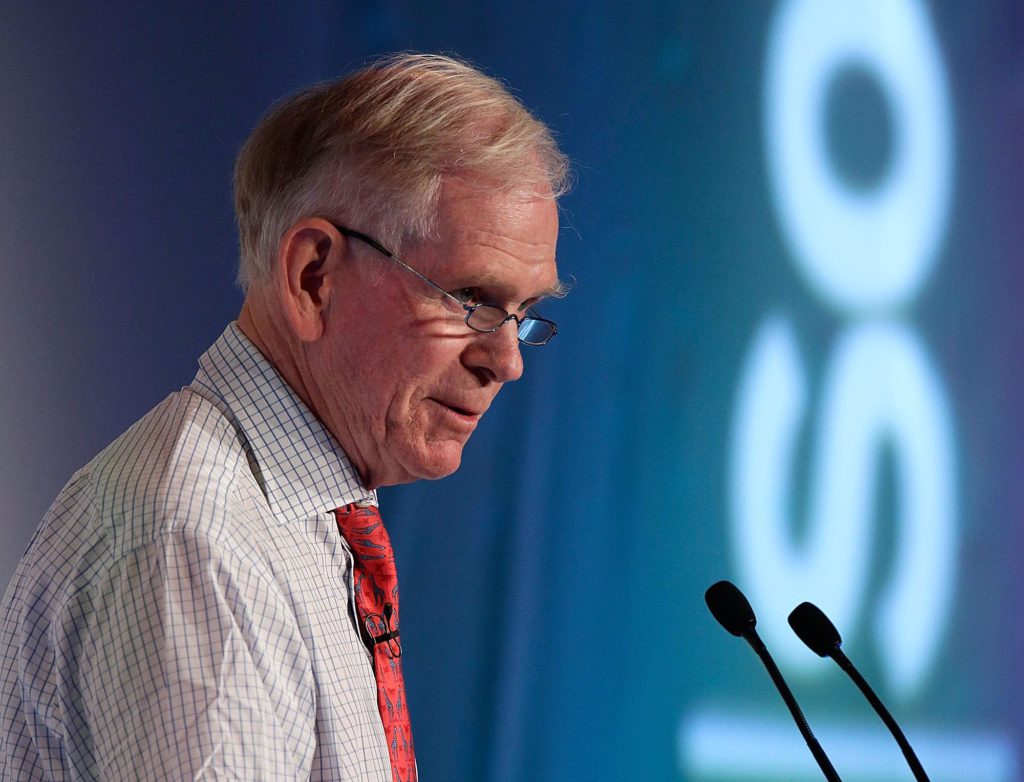The popping of the bubble in US stocks is far from over and investors shouldn’t get too excited about a strong start to the year for the market, warns Jeremy Grantham, the co-founder and long-term investment strategist of GMO.
(Bloomberg) — The popping of the bubble in US stocks is far from over and investors shouldn’t get too excited about a strong start to the year for the market, warns Jeremy Grantham, the co-founder and long-term investment strategist of GMO.
In fact, the 84-year-old money manager calculated that the value of the S&P 500 at the end of the year should be about 3,200, he says in a paper out Tuesday. That would equal an almost 17% full-year drop and a 20% decline for the year from current levels. Grantham believes the index is likely to spend some time below that level during 2023, including around 3,000.
“The range of problems is greater than it usually is — maybe as great as I’ve ever seen,” Grantham said in an interview from Boston.
“There are more things that can go wrong than there are that can go right,” he added. “There’s a definite chance that things could go wrong and that we could have basically the system start to go completely wrong on a global basis.”
Grantham, who has long been one of Wall Street’s most well-known bears, also doesn’t discount the idea that the benchmark index could fall to around 2,000, which he says would be a “brutal decline.”
Value strategies struggled with lackluster returns in the decade following the global financial crisis as growth stocks led the longest bull market in US stocks on record. But now, as the Federal Reserve tries to tame elevated inflation with aggressive interest-rate increases, value strategies are enjoying a revival. The GMO Equity Dislocation Strategy, which is long value equities and short those the company sees as being valued at “implausible growth expectations,” had gained nearly 15% last year through November.
Value has worked “quite a lot better” over the past year and has outperformed growth during that stretch. Before that, growth had a solid 10-year run, though value had been outperforming in the decades prior to that, Grantham said. “In the range of value versus growth, value is still much more attractively positioned than growth,” he explained. “It’s gone half the way back, but it’s still cheaper.” Value stocks could outperform growth ones by 20 percentage points over the next year or two, he added.
As to what might be currently attractive, Grantham says an investor could divide value stocks into four quartiles. The third group — made up of “the pretty cheap” — did well last year and is no longer super attractive. But the cheapest quartile, which didn’t have the best year, could be poised to hold up best. “It will have a very good time,” he said.
Grantham views the process of further stock market pain playing out now as similar to the popping of bubbles following other rare “explosions of investor confidence” such as in 1929, 1972 and 2000. While many are attributing last year’s slide in stocks to the war in Ukraine and the surge in inflation, or reduced growth from Covid-19 and ensuing supply chain problems, Grantham believes the market was due for a comeuppance regardless.
While the first and “easiest” leg of the bubble’s bursting is over, Grantham says that the next phase will be more complicated. Seasonal strength in the market in January and during the current period of the presidential cycle could keep the market buoyant in the early part of the year.
“Almost any pin can prick such supreme confidence and cause the first quick and severe decline,” he wrote. “They are just accidents waiting to happen, the very opposite of unexpected. But after a few spectacular bear-market rallies we are now approaching the far less reliable and more complicated final phase.”
More stories like this are available on bloomberg.com
©2023 Bloomberg L.P.










